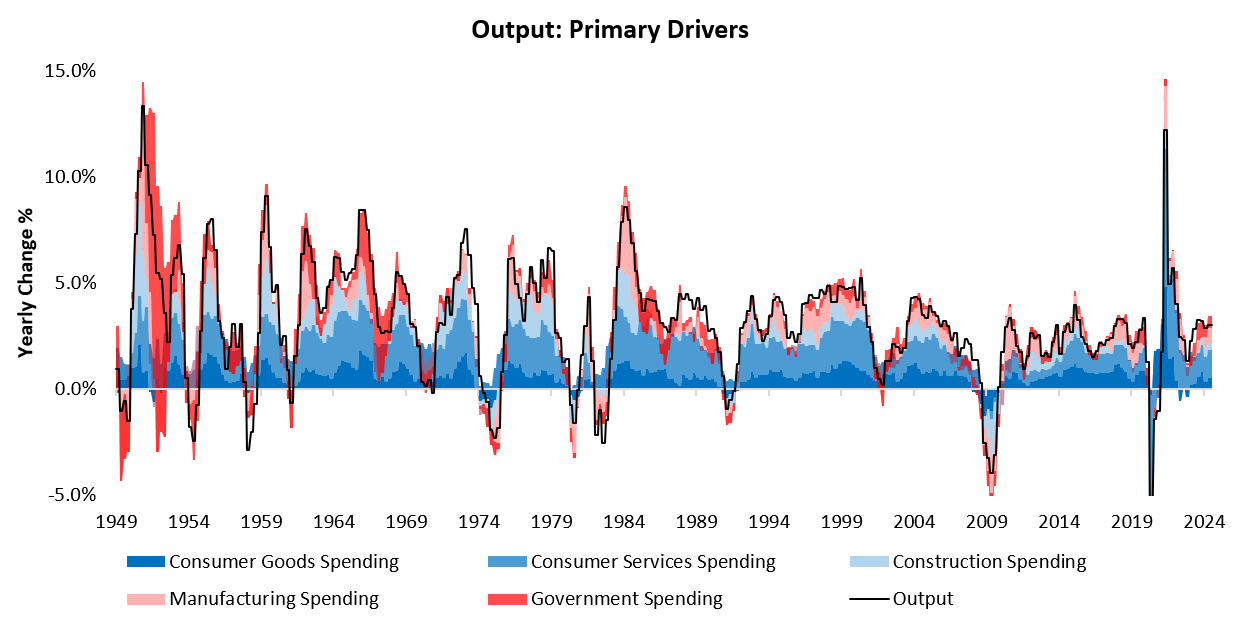Welcome to The Observatory. The Observatory is how we at Prometheus monitor the evolution of the economy and financial markets in real time. The insights provided here are slivers of our research process that are integrated algorithmically into our systems to create rules-based portfolios.
Our primary takeaways are as follows:
Labor market conditions have sequentially contracted. Employment and output have diverged meaningfully, setting the stage for some slowing in output.
Additionally, we are observing a moderate gap between spending and employment dynamics in the manufacturing sector. This gap between spending and growth rates is anomalous relative to history, suggesting the potential for output to slow.
In the context of markets, we see a combination of mean reversion in output and cyclical slowing contributing to a slowing of the economy.
The labor market is dominant in driving variation in overall economic activity. While business cycle pressures may originate in other areas of the economy, the labor market is the ultimate transmission mechanism for cyclical conditions to aggregate spending and income. Below, we visualize how employment growth explains most of the variance of GDP in a time-varying manner. Notably, during expansions, employment sets the baseline trend for GDP growth, while during recessions, job losses explain almost all of the contraction in activity:
To further understand what is driving output growth, we decompose output growth into its primary macro drivers, i.e., Consumer Goods, Consumer Services, Construction, Manufacturing, and Government Expenditure. Over the last year, output has grown by 0.51%. Consumer Services Spending has been the primary driver, contributing 1.34%, and Construction Spending has been the primary detractor, contributing 0.28% to headline output growth, respectively. We visualize this below:
Next, we employ a similar decomposition to understand the primary macro drivers of employment growth. Over the last year, employment has grown by 1.51%. Consumer Services Employment has been the primary driver, contributing 0.74%, and Manufacturing Employment has been the primary detractor, contributing 0.02% to headline employment growth, respectively. We visualize this below:
To further understand what is driving labor market growth, we decompose employment growth into its primary macro drivers, i.e., changes in the labor force and unemployment. A growing labor force supports the steady expansion of the labor market. Meanwhile, changes in unemployment largely stem from cyclical conditions. During expansions, unemployment falls, driving up employment, and during contractions, unemployment drives downturns in employment:






